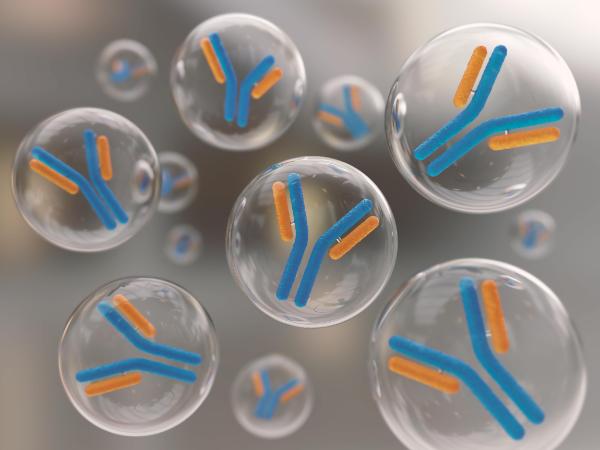Scaling up the production of antibodies has allowed researchers to fast track the development of a cure for the Hendra virus

In September 1994, in the Brisbane suburb of Hendra, something very dangerous happened — an ancient type of virus called a Henipavirus managed to jump from its animal host to infect a human. Within a matter of days thirteen infected horses had died. Of the two humans that had been infected, one quickly succumbed to a severe influenza-like illness.
The virus in question came to be known as the Hendra virus.
Hendra virus is a zoonotic disease, meaning it can jump from animals to humans. Most commonly, fruit bats act as a reservoir for the virus, but it can also be transmitted from bats to horses and — since 1994 — humans. By 2009, four people along with numerous horses had died after contracting Hendra, and more outbreaks were on the way.
Fortunately, around the same time, researchers in the US were developing an antibody that could block a Henipavirus infection. When administered soon after exposure to a Henipavirus, this antibody binds to a protein on the surface of the virus, blocking entry to healthy human cells. The immune system can then fight off the virus.
The antibody, called m102.4, was developed by Professor Christopher Broder from the National Uniformed Services University (USU) in Washington DC. Following an outbreak of Hendra virus in 2010, Queensland Health obtained cells from USU that could produce a small amount of the antibody.
What is an antibody?
Antibodies are proteins that the body produces in response to the presence of an antigen, which is a molecule that is foreign to the body.
In the case of an invading pathogen, such as a bacteria or virus, proteins on the surface of those pathogens act as antigens. In response, immune cells produce very specific antibodies that can precisely recognise specific antigens and stick to them. These antibodies can serve as red-flags that will attract pathogen-destroying immune cells. Meanwhile, by binding to important proteins that the pathogen needs, antibodies can prevent pathogens from working properly.
The experimental treatment was administered to a mother and her 12-year-old daughter who had been exposed to Hendra virus and, thankfully, they survived. Nevertheless, it was clear that a larger supply of the antibody would be needed in the event of future outbreaks.
To address this, scientists at the National Biologics Facility at UQ’s AIBN developed a bioprocess to produce larger amounts of the antibody with high levels of purity required for clinical use in humans, and without needing to reproduce any part of the Hendra virus.
They were just in time. By July 2011, another outbreak of Hendra was underway, but there was enough antibody available. Production of the antibody for emergency compassionate use has since continued and, to date, the antibody has been administered to more than 10 people, including 3 children, who had high-risk exposure to Hendra virus. None developed the illness.
The National Biologics Facility also manufactured enough antibody to enable a recently completed phase I clinical trial.
Interestingly, the antibody can also be used against another Henipavirus, the highly lethal Nipah virus. Recently, the World Health Organisation listed Nipah virus as a priority pathogen with epidemic potential. The ability to produce the antibody at increasingly larger scales will no doubt play an important role in mitigating the impact and spread of this disease.
What in the world is a zoonose?
Infectious diseases tend to prefer certain hosts, but over time those preferences can change or broaden. As a result, we have zoonotic diseases or ‘zoonoses’, which can be transmitted from animals to humans. This can happen through direct contact or through contaminated food or water. Seasonal influenza is an example of a zoonotic disease that jumped from animals to human hosts a long time ago. But sometimes that jump happens on a regular basis, such as with bird flu and Ebola virus. Consequently, global health officials are always monitoring emerging zoonotic diseases that could pose a threat to public health.
Flying foxes are the natural host for the Hendra virus

Horses that consume feed or water contaminated with body fluids from the flying fox contract the Hendra virus

Humans contract Hendra via direct exposure to horse respiratory secretions from dying or recently dead horses
* Header image produced by Electron Microscopy Unit, Australian Animal Health Laboratory, CSIRO
< Using phages to fight the rise of superbugs
Previous Article
Welcome to the biofoundry
Next Article
